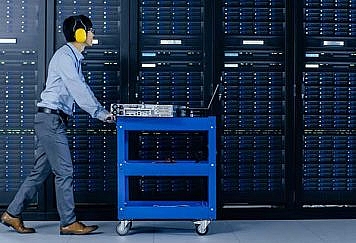The adverse impact of global climate change is undeniable and stretches far beyond temperature increase, affecting water, ecosystems, food production, and human health worldwide.
Food production is one of the biggest areas suffering from climate change as agriculture strongly depends on climate and weather conditions, including temperature, water, and soil. And even if farming practices can be adaptable, such global changes as increased temperatures, disease outbreaks, pest infestations, and different weather extremes make it almost impossible for farmers to interfere and save their yields.
One of the biggest issues for agriculture is to preserve soil health as this resource plays a key part in balancing the climate via acting as a carbon sink and sequestering carbon dioxide from the atmosphere into organic carbon. Unfortunately, climate change, reckless land use, and degradation processes lead to a severe decrease in the soil’s capacity to store CO2. This is one of the reasons for the erosion of soil, although it can also happen due to droughts, floods, and wind caused by changes in climate and water cycle. And poor quality of soil, water, and air inevitably results in human health issues. Climate change is also threatening to various ecosystems due to the shift in the timing of events such as flowering and egg-laying, which ruins the natural habitat of different species.
Luckily, there is modern technology designed to help mitigate the effects of climate change. In this piece, we’ve gathered the top 5 of these.
Floating Solar
Solar panels are nothing new in the modern world. However, not every roof is suitable for installing solar panels. Such factors as shading, obstacles of all kinds, the age of buildings, and the small available space often force people to look for other places to install solar power plants.
When it comes to large-scale solar projects, the most common rooftop solar station alternatives are above-ground installations or solar sheds. But there is another new alternative – floating solar power plants.
Floating solar installations are mounted on hydroelectric dams in the unused water surface connected to hydropower that can generate energy at night time.
New Battery Chemistries
Lithium-ion (Li-ion) technology dominates the market of utility-scale and electric-vehicle (EV) batteries. However, Li-ion batteries struggle to hold a full charge for many hours, and their storage capacity significantly decreases with time.
The solution comes in the form of new battery chemistries, meaning the use of new chemistries such as zinc-air and lithium-sulfur in batteries. Compared to conventional lithium-ion batteries, zinc-air batteries offer cheaper energy with longer service life. They also have a lower risk of overheating and catching fire, so when using them, there is no need for an expensive cooling system, which significantly increases the cost of all lithium-ion batteries.
On top of that, Zinc is non-toxic, unlike lithium, which, if handled carelessly, can be harmful to the eyes, skin, and respiratory tract. The extraction and utilization of lithium itself is not an environmentally friendly process.
Modern researchers also keep working on developing and producing lithium-sulfur batteries. Such batteries will be able to provide autonomous operation of a smartphone for five days, while an electric car could theoretically drive up to 1000 km on it. Besides, lithium-sulfur batteries have a less environmental impact and are much cheaper in manufacturing compared to li-ion ones.
Green Cement
Cement is one of the most used products in construction worldwide. Unfortunately, its manufacturing process requires limestone to be heated to more than 2,700 degrees in a chemical reaction that also releases huge amounts of carbon dioxide.
Green cement was developed as an alternative that not only works better and requires fewer natural materials to manufacture but also can be fired at lower temperatures, significantly cutting carbon dioxide emissions.
Household Energy Efficiency
Reducing overall energy consumption is one of the most effective measures to tackle climate change. And the best way to do so is to make homes more energy-efficient. The market already offers numerous green, electronic products that are a great place to start and can help save up on household bills annually.
5G-based Smart Grids
Famous mobile phone technology called 5G can also be used to enable complex smart grids capable of connecting billions of data points across huge distances. The data could be from wind turbines, solar panels, electric vehicles, or IoT devices.
Collection and processing of this data would ensure the utilization of every watt of renewable energy as efficiently as possible at any time.
Follow TechStrange for more Technology, Business, and Digital Marketing News.





